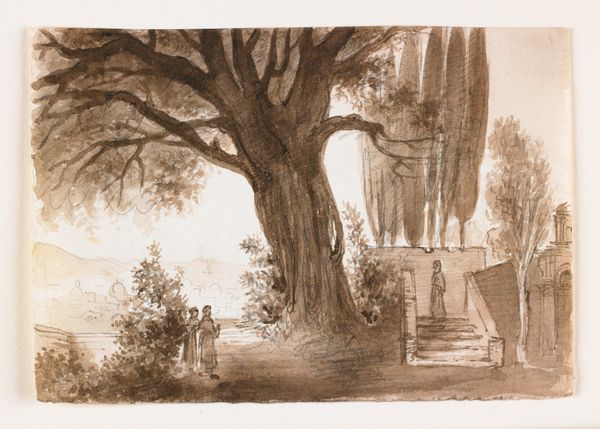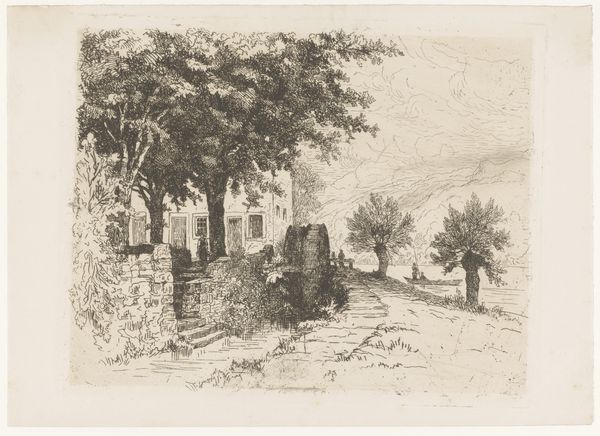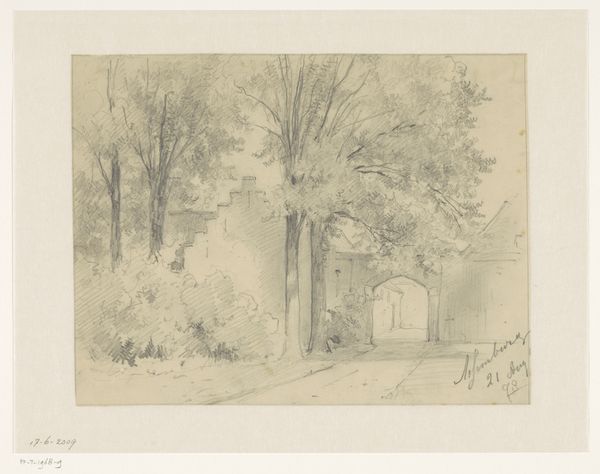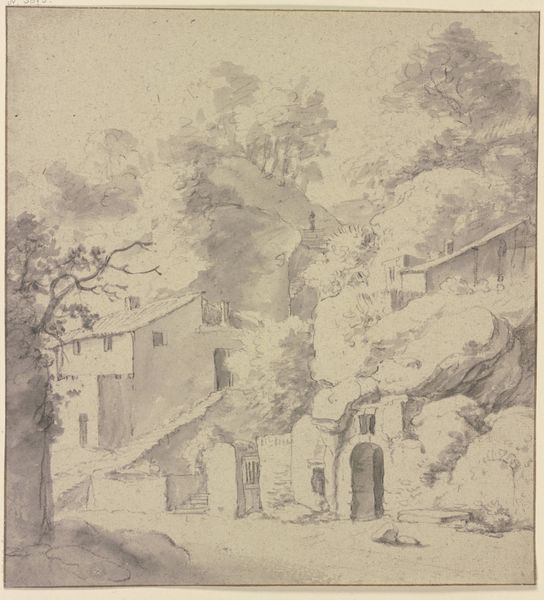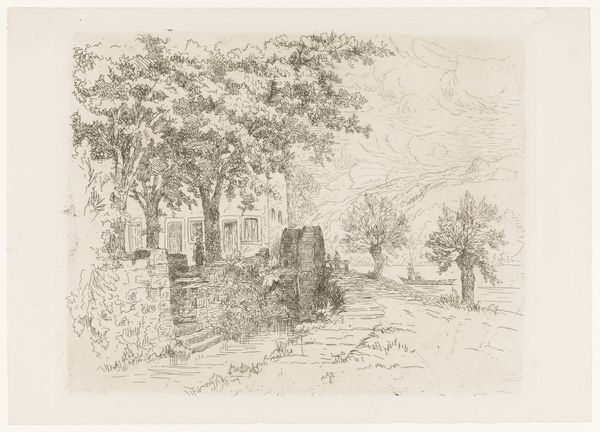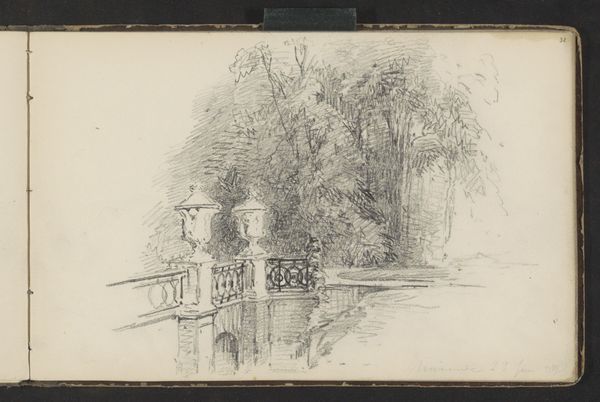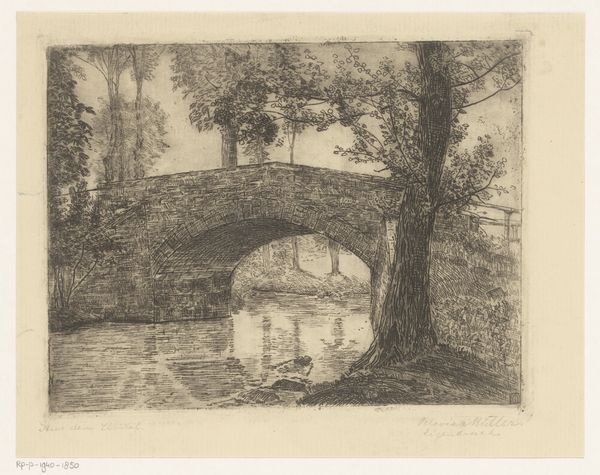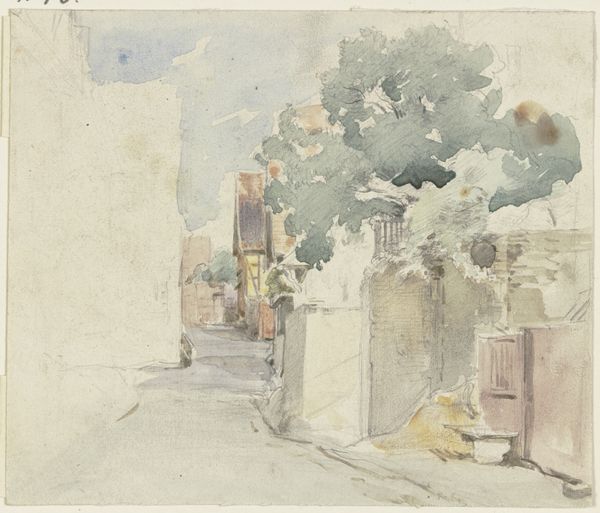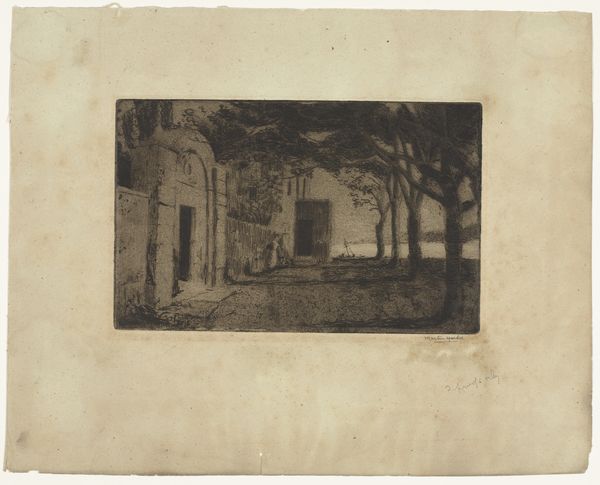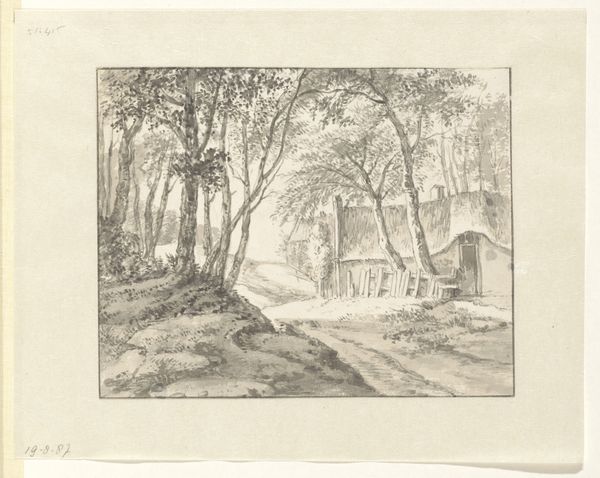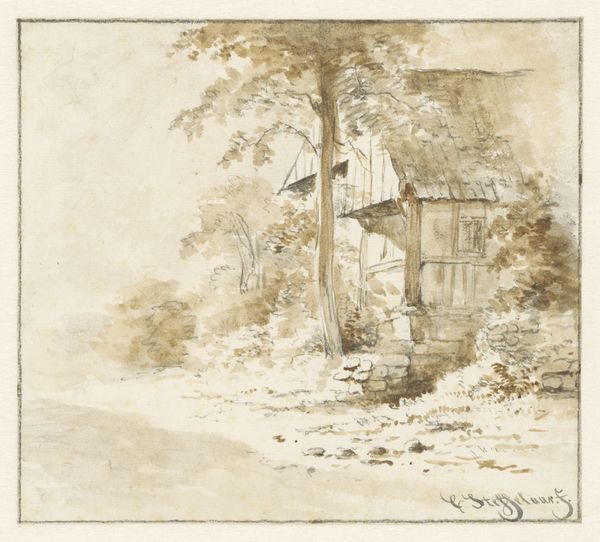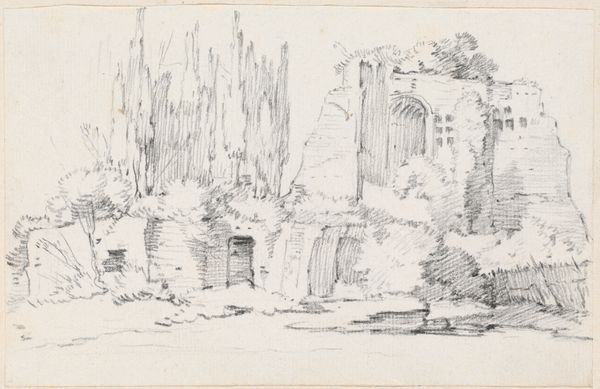
drawing, watercolor, ink
#
drawing
#
ink painting
#
landscape
#
charcoal drawing
#
watercolor
#
ink
#
romanticism
#
cityscape
#
watercolor
Dimensions: 3 5/8 x 5 11/16 in. (9.21 x 14.45 cm) (sheet)
Copyright: Public Domain
Editor: This is "Landscape with Ruins," a watercolor and ink drawing from the early 19th century, artist unknown, housed here at Mia. It has a haunting feel. Like a memory of something grand that's faded over time. What do you see in this piece? Curator: I see a visual commentary on power structures and their inevitable decline. Consider the Romantic period. Landscape paintings weren’t just about pretty scenery; they often reflected anxieties about industrialization, social upheaval, and the decay of the old order. The ruins, the figures almost as ghosts atop the stairs-- they suggest a fallen aristocracy. Do you notice the use of light and shadow here? Editor: Definitely, there's a real contrast. Some areas are washed out, others quite dark. Curator: Exactly. This dramatic chiaroscuro evokes a sense of loss. It emphasizes the precariousness of human achievement. Watercolors and inks work here to offer fluidity and immediacy but also imply ephemerality, a visual parallel to the fleeting nature of power. Do you think there’s an inherent critique embedded within the image of people appearing in what is essentially now an outdoor space? Editor: That's a fascinating point! Like the space isn't truly functional or defensible anymore. It does feel very exposed and vulnerable, which must have been scary. Curator: Precisely. The ruin is recontextualized into usable land. And by making it "usable," we can also consider how this landscape is being viewed, perhaps consumed and molded anew to become what someone needs it to be in a contemporary setting. The landscape, in other words, now provides an arena for change. It underscores both destruction and renewal. Editor: Wow, I hadn't considered the layered symbolism like that. Seeing beyond the picturesque helps give me context that I had previously overlooked. Curator: Agreed. The visual and political power lies within who determines the history in a place.
Comments
No comments
Be the first to comment and join the conversation on the ultimate creative platform.
